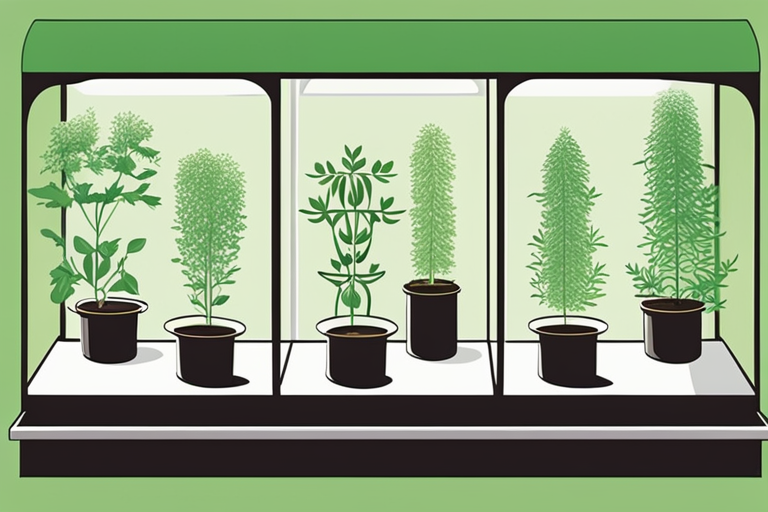
Can You Freeze Alfalfa to Extend Its Shelf Life?
Get Your Free Food Safety Cheat Sheet
30 most common foods with instant answers. Print it and stick it on your fridge—completely free!
Can You Freeze Alfalfa to Extend Its Shelf Life?
Alfalfa is a nutrient-rich green that is packed with vitamins and minerals, making it a popular choice for salads, sandwiches, and smoothies. However, keeping alfalfa fresh can be a challenge due to its delicate nature. Freezing alfalfa is a common method used to extend its shelf life and preserve its nutritional value. In this blog post, we will explore the process of freezing alfalfa, its benefits, and some important safety tips to keep in mind. (Alfalfa)
Benefits of Freezing Alfalfa
Freezing alfalfa can help you extend its shelf life and ensure that you always have this nutritious green on hand. Some benefits of freezing alfalfa include:
-
Preserves Nutritional Value: Freezing helps retain the vitamins and minerals present in alfalfa, ensuring that you get all the health benefits it offers.
-
Convenience: Having frozen alfalfa on hand makes it easy to add to your meals without worrying about it spoiling quickly.
-
Cost-Effective: By freezing alfalfa, you can buy in bulk when it's in season and enjoy it throughout the year without wasting any.
-
Reduces Food Waste: Freezing alfalfa allows you to store it for longer periods, reducing the chances of it going bad and being thrown away.
How to Freeze Alfalfa
Freezing alfalfa is a simple process that can be done in a few easy steps. Here's how you can freeze alfalfa to extend its shelf life:
Step 1: Selecting Fresh Alfalfa
When freezing alfalfa, it's essential to start with fresh greens. Look for vibrant green leaves that are free from wilting or discoloration. Avoid using alfalfa that is already past its prime, as freezing will not revive its quality.
Step 2: Washing and Drying
-
Wash the Alfalfa: Rinse the alfalfa thoroughly under cold running water to remove any dirt or debris.
-
Dry the Greens: Use a salad spinner or paper towels to dry the alfalfa completely. Excess moisture can lead to freezer burn, affecting the quality of the greens.
Step 3: Portioning and Packaging
-
Portion the Alfalfa: Divide the alfalfa into manageable portions that you are likely to use in one go.
-
Packaging: Place the portions of alfalfa in airtight freezer bags or containers. Remove as much air as possible before sealing to prevent freezer burn.
Step 4: Freezing
-
Label and Date: Don't forget to label the bags or containers with the contents and date of freezing for easy identification.
-
Freeze: Place the packaged alfalfa in the freezer. Make sure to store them in a single layer initially to prevent them from sticking together. Once frozen, you can stack them to save space.
Safety Tips for Freezing Alfalfa
When freezing alfalfa, it's crucial to follow some safety tips to ensure that the greens remain safe to consume:
Hygiene
- Always wash your hands before handling alfalfa to prevent any contamination.
- Clean and sanitize cutting boards, knives, and other utensils used in the process.
Storage
- Keep the frozen alfalfa at a consistent temperature of 0°F (-18°C) or below to maintain its quality.
- Avoid opening the freezer frequently to prevent temperature fluctuations that can affect the greens.
Thawing
- Thaw frozen alfalfa in the refrigerator to prevent the growth of harmful bacteria.
- Use thawed alfalfa within a few days to enjoy them at their best quality.
Conclusion
Freezing alfalfa is a convenient way to extend its shelf life and ensure that you always have this nutritious green at your disposal. By following the simple steps outlined in this blog post and adhering to the safety tips provided, you can enjoy fresh-tasting alfalfa in your meals throughout the year. So, the next time you come across a bountiful batch of alfalfa, consider freezing some to enjoy its benefits for longer periods. Learn more about alfalfa and start incorporating this nutrient-rich green into your diet today! (Alfalfa)

Authoritative Food Safety References
These agencies and university labs inform every tip and health precaution we publish.
USDA FoodKeeper – Cold Storage Guidelines
Official refrigerator, freezer, and pantry timelines maintained by the U.S. Department of Agriculture.
Visit USDA FoodKeeperFDA Produce Safety Rule & Grower Guidance
Field-to-fridge handling practices that prevent contamination of fruits, vegetables, and leafy greens.
Visit FDA Produce SafetyCDC Foodborne Illness Prevention Hub
Surveillance-backed guidance on pathogens, symptoms, and steps to reduce foodborne illness risk.
Visit CDC Food SafetyUC Davis Postharvest Technology Center
University research detailing optimal storage atmospheres for produce after harvest.
Visit UC Davis PostharvestPenn State Extension – Home Food Preservation & Safety
Peer-reviewed extension bulletins on safe canning, chilling, and reheating practices.
Visit Penn State ExtensionHow long can you freeze alfalfa for?
Can frozen alfalfa be used in salads or smoothies?
How should frozen alfalfa be stored in the freezer?
Can frozen alfalfa be used in cooked dishes?
Get Your Free Food Safety Cheat Sheet
30 most common foods with instant answers. Print it and stick it on your fridge—completely free! Want more? Upgrade to the complete guide with 70+ foods.
Scan your food directly and get instant safety info using our AI-powered camera feature.